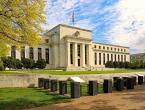EUR/USD
1.17337
-0.055%
Gold
4327.75
-0.242%
Oil
56.236
-0.813%
USD/JPY
155.836
0.095%
GBP/USD
1.33668
-0.057%
GBP/JPY
208.304
0.044%
Swedish Prime Minister: This is the most important EU summit since the outbreak of the Russia-Ukraine conflict in 2022.Hungarian Prime Minister Viktor Orbán: The Belgian Prime Minister is right on the issue of Russian assets.German Chancellor Merz: I believe we can find a common EU solution.Hungarian Prime Minister Viktor Orbán believes that providing funds to Ukraine through EU joint loans is not an acceptable approach for Hungary.Futures News, December 18th: Enterprise Singapore (ESG) reported that Singapores middle distillate fuel inventories rose by 71,000 barrels to a two-week high of 8.431 million barrels in the week ending December 17th.











